
When it comes to choosing a robotic pool cleaner, two models often considered are the Aiper Seagull 1000 and the Dolphin Proteus DX3. At poolpad.com, we decided to purchase, test, and review both of these units thoroughly to give you an accurate guide to making your decision.
The Aiper Seagull 1000 initially caught our interest with its affordable price and cordless design, but our testing revealed disappointing results. Despite being billed as an upgrade over the Aiper 600, the Seagull 1000 fell short in several key areas. Its lack of an active brush and inefficient filters meant it struggled to cover and clean the pool floor effectively. Moreover, its battery often couldn't sustain a long enough charge to complete a thorough cleaning cycle. You can read more about our in-depth review in the Aiper Seagull 1000 Review.
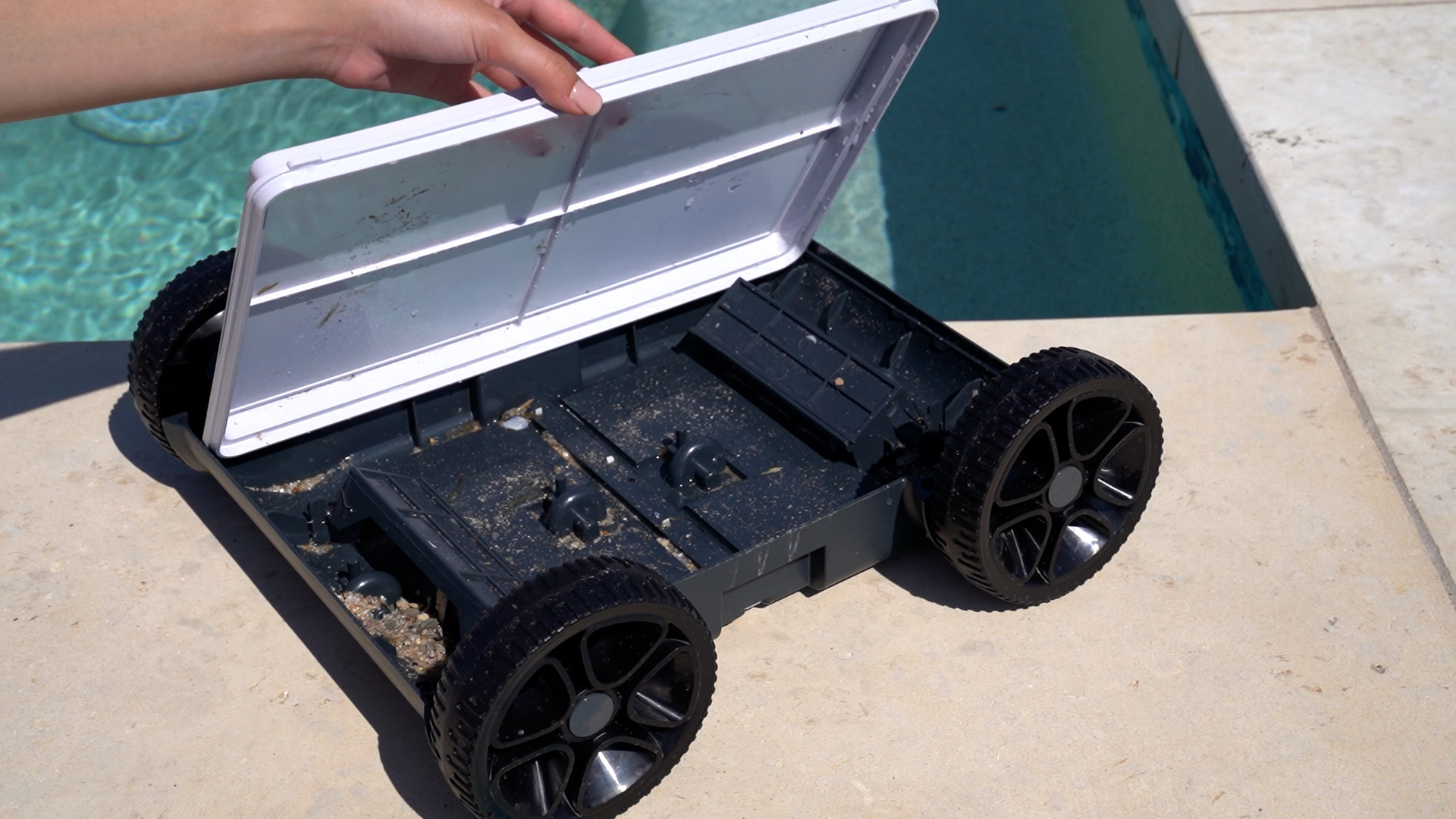
The Dolphin Proteus DX3 offers a more reliable performance compared to the Aiper Seagull 1000. It's capable of covering the floors and walls of your pool but stops just shy of cleaning the waterline. During our tests, the DX3 showed solid vacuuming power and a user-friendly design. However, we noted some issues, including the lack of NanoFilters and significant restocking fees if you decide to return the unit. You can read all about our findings in the Dolphin Proteus DX3 Review.
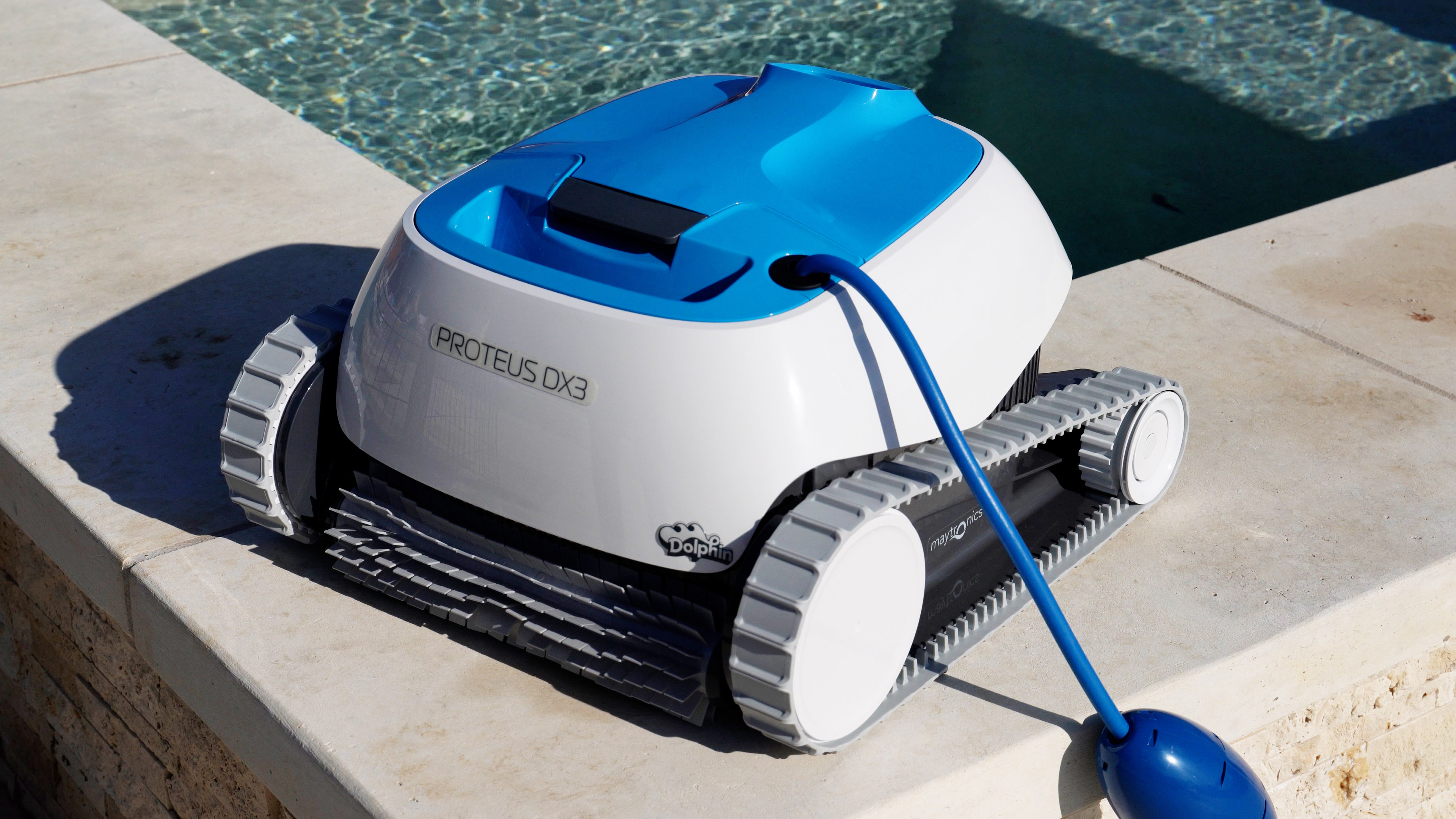
While the Aiper Seagull 1000 presented itself as a budget-friendly option, its performance left much to be desired. In contrast, the Dolphin Proteus DX3 performed better in key areas, but it has its shortcomings, particularly with its hidden restocking fee and limited filter options. Both reviews offer detailed insights into their strengths and weaknesses, arming you with all the information you need.
To provide a thorough comparison, we tested each robot in varied pool environments. We assessed their pool coverage, cleaning ability, and additional features, ensuring that each robot's performance was benchmarked accurately. Additionally, we scrutinized their warranties and design features to test their ease of use and durability. This process allowed us to review each model comprehensively, highlighting where they excelled and where they fell short.
Testing robotic pool cleaners is a meticulous and thorough process. We spent three months evaluating both the Aiper Seagull 1000 and the Dolphin Proteus DX3. Each robot was put through its paces in various pool environments to gauge their performance accurately.
To start, we assess pool coverage. This involves observing how effectively the robot navigates and cleans the pool floor, walls, and waterline. We look for consistency in pathing, areas missed, and whether it can handle obstacles like drains and steps.

Next, we evaluate cleaning ability. This involves leaving various types of debris in the pool, such as leaves, dirt, and small twigs, to see if the robot can pick them up efficiently. The performance of the Aiper Seagull 1000 in this area was disappointing. It often missed debris and could not effectively scrub the pool surface.
We then move on to analyze the filtration system. We check how well the robot filters out smaller particles that make the water cloudy. The Dolphin Proteus DX3 has a standard filter basket, but it lacks the finer filtration options found in premium models. This resulted in subpar performance when dealing with fine debris.

Finally, we examine the feature set and warranty of each robot. This includes ease of use, such as whether it has a programmable timer or app connectivity. The Dolphin Proteus DX3 includes a programmable timer, making it user-friendly, but the hidden restocking fee is a significant drawback. On the other hand, the Aiper Seagull 1000’s cordless design sounded appealing but didn’t live up to expectations in real-world use.
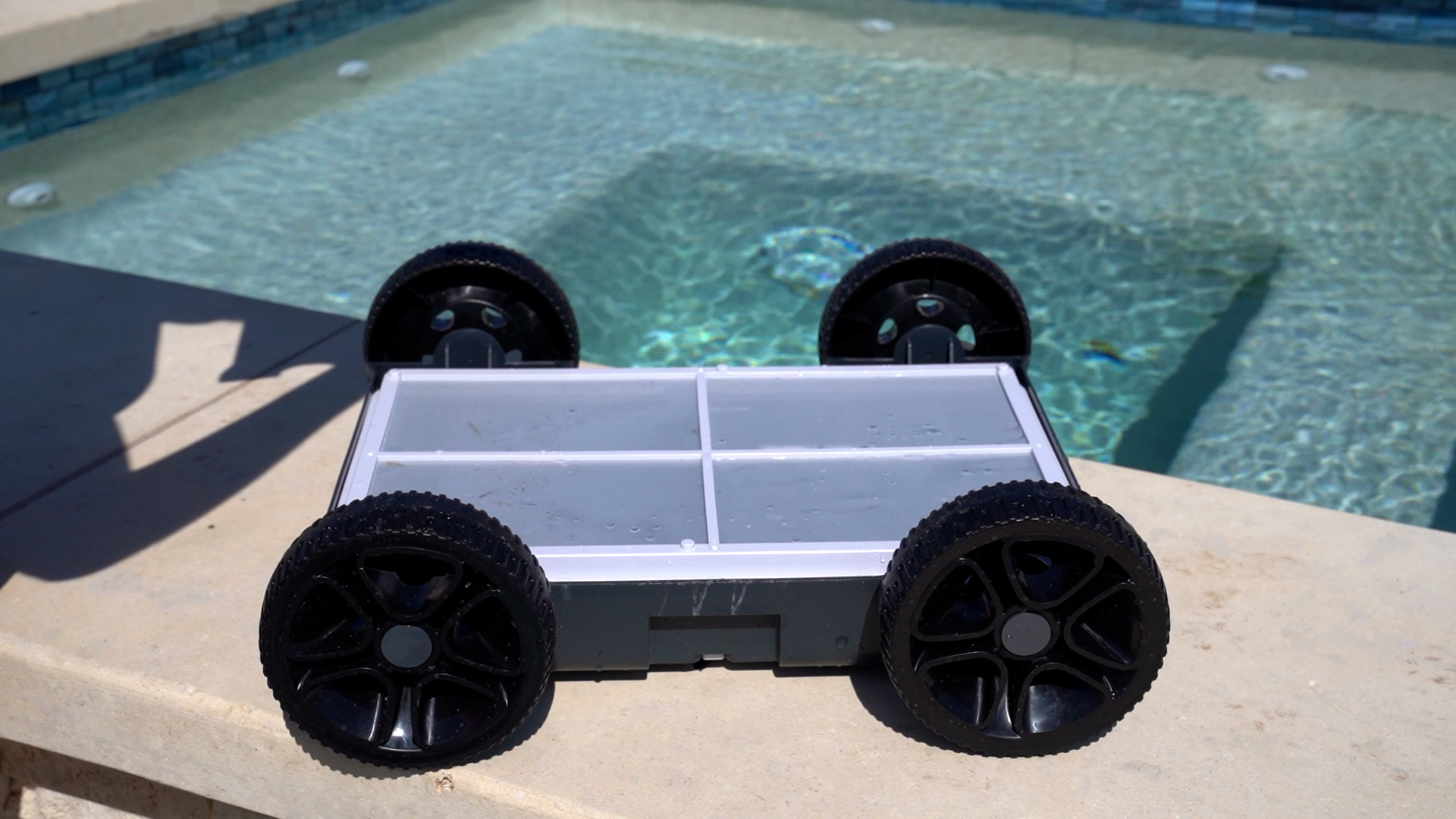
Overall, the goal of our testing is to provide you with a comprehensive review based on real-world performance. We look at how these robots handle typical pool maintenance tasks and highlight features that either enhance or hinder their usability. Over three months, we found that while each robot has its strengths, some glaring weaknesses need to be addressed for optimal performance.
Through our detailed reviews, we aim to guide you in making an informed decision. Whether it's avoiding restocking fees with the Dolphin Proteus DX3 or understanding the limitations of cordless designs like the Aiper Seagull 1000, our testing ensures you get the full picture before making a purchase.
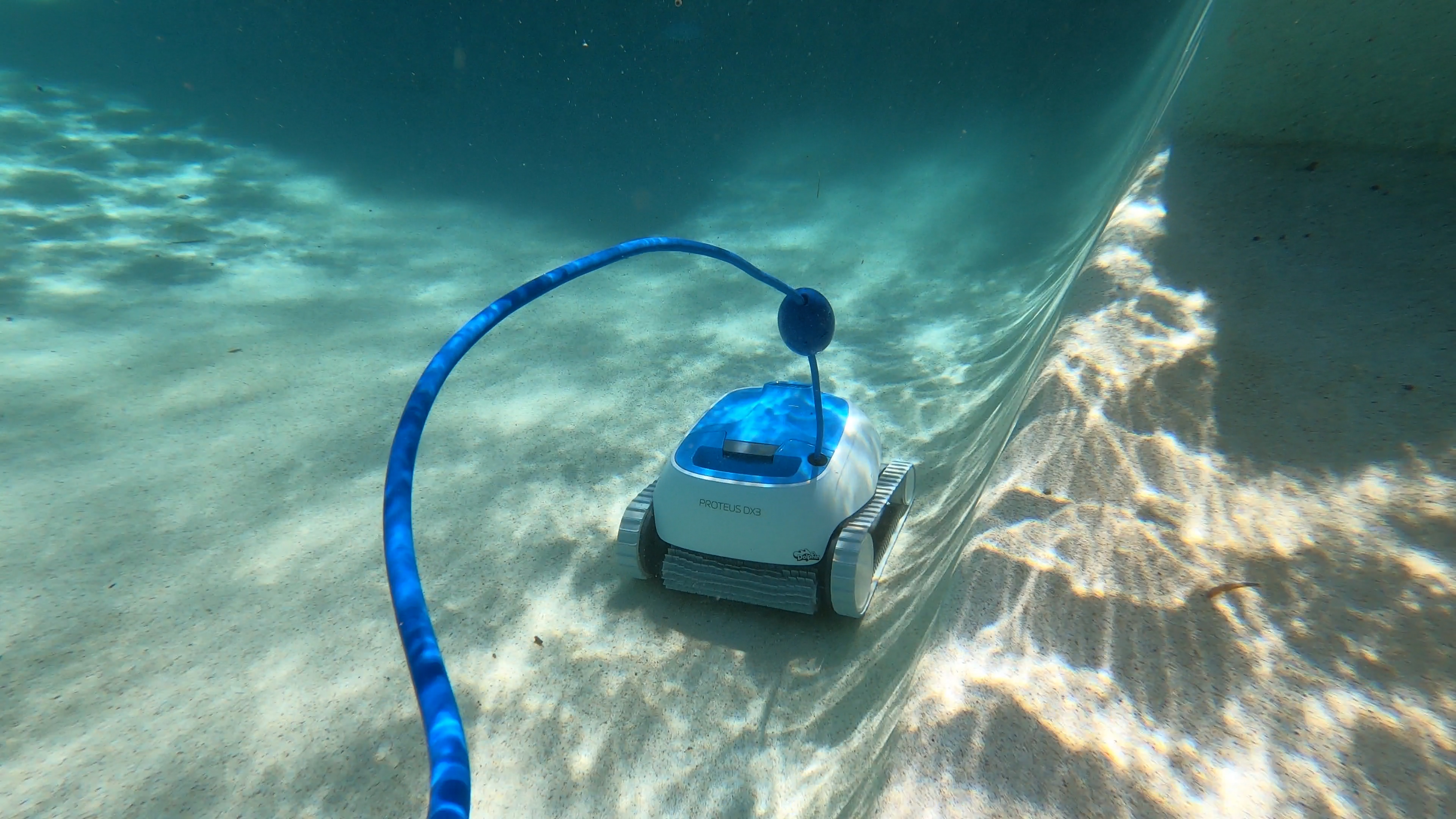
Ultimately, our rigorous testing process helps identify which robotic pool cleaner is best for your needs. Higher-end models like the Dolphin Quantum offer excellent features such as waterline cleaning and advanced filtration, providing a more comprehensive cleaning solution compared to budget options.
For more insights on the best robotic pool cleaners of the year, check out our detailed reviews and comparisons. We continually update our findings to bring you the most accurate and useful information.
When comparing the pool coverage capabilities of the Aiper Seagull 1000 and the Dolphin Proteus DX3, the differences are immediately noticeable. The Seagull 1000 can only clean the floors of your pool, which severely limits its utility, especially for those who need a comprehensive cleaning solution. This lack of coverage leaves debris on walls and waterlines, areas that typically accumulate the most dirt and algae.
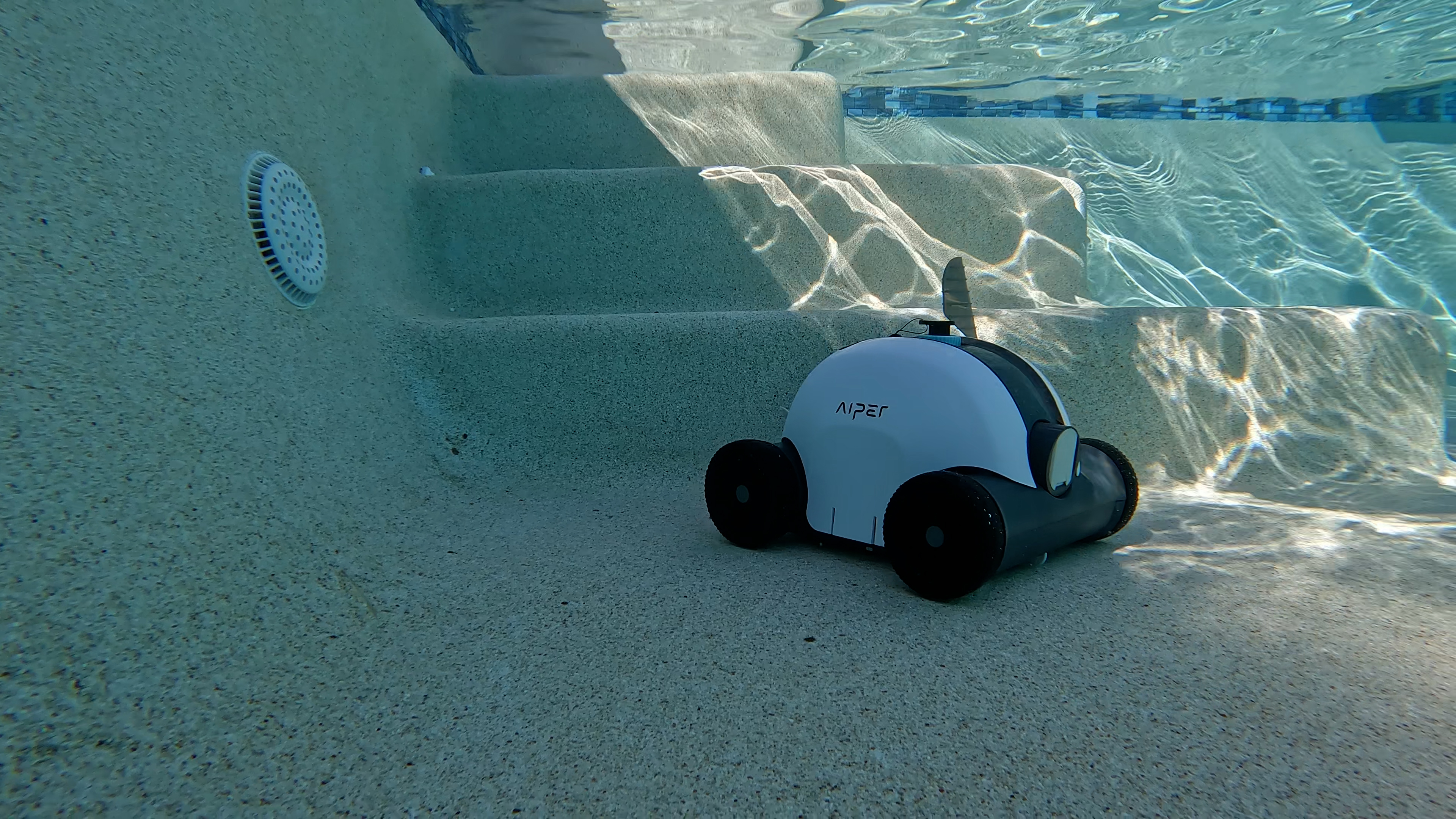
In contrast, the Dolphin Proteus DX3 covers both the floors and walls of the pool but falls short of cleaning the waterline effectively. Despite missing this crucial area, the DX3 generally offers more comprehensive coverage than the Seagull 1000. Its cleaning pattern is calculated, ensuring it doesn’t miss large sections of the pool, although it doesn’t reach the waterline.
When it comes to the thoroughness of cleaning, the Aiper Seagull 1000 leaves much to be desired. Without active brushes, it struggles with stuck-on debris and often misses large areas. Its lack of navigation software means it frequently gets stuck or cleans the same spot repeatedly. On the other hand, the Dolphin Proteus DX3 shows improved efficiency due to its better vacuuming power and the inclusion of a programmable timer.
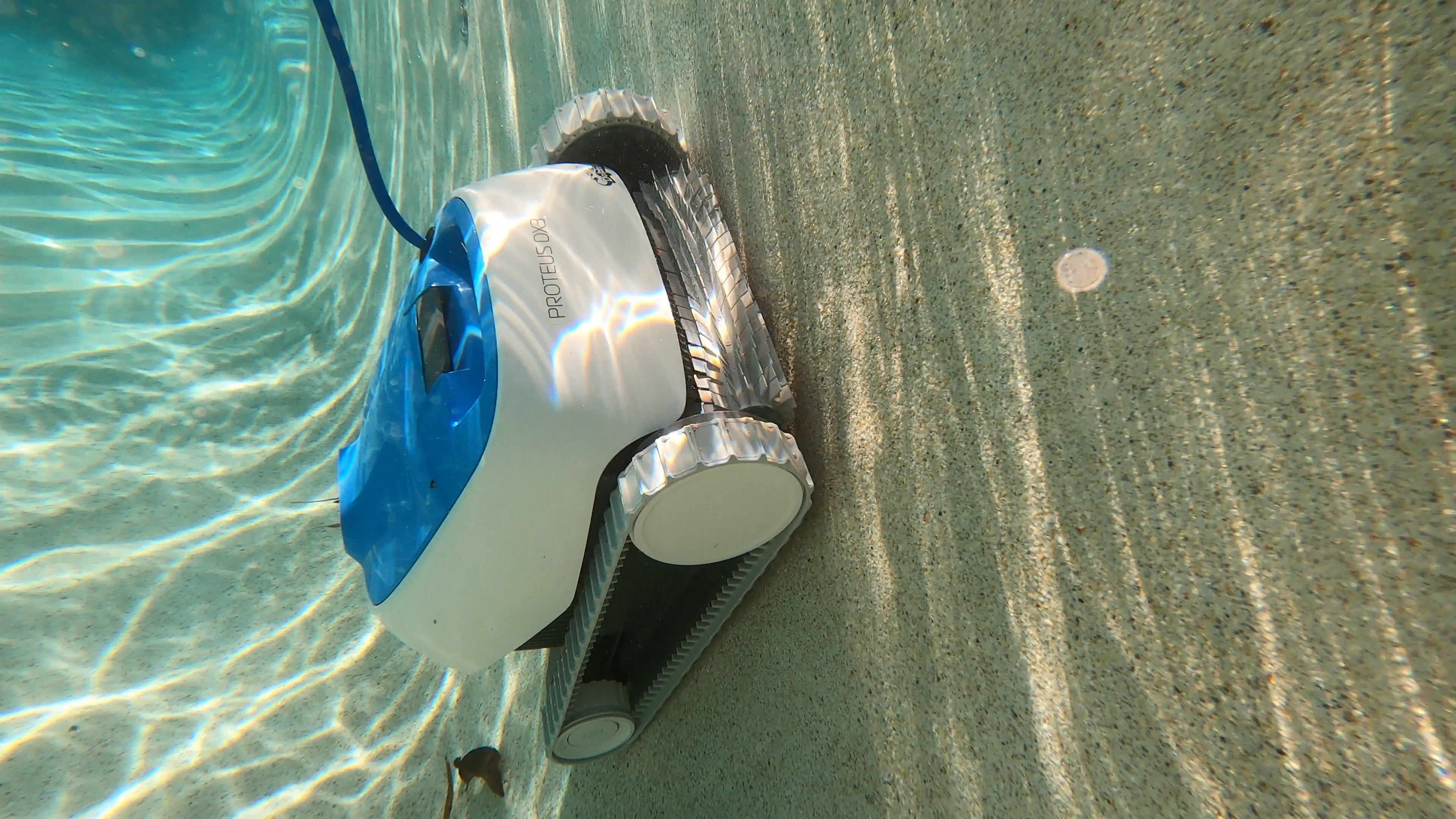
The coverage scores reflect these observations. The Aiper Seagull 1000 received a coverage score of 4, primarily due to its floor-only cleaning capability. In contrast, the Dolphin Proteus DX3 earned a higher score of 8. This score is justified by its ability to clean both the pool floor and walls effectively, even though it doesn't reach the waterline.
Despite the Proteus DX3 not covering the waterline, its thorough wall and floor cleaning make it a more reliable option than the Aiper Seagull 1000. Thus, if you're looking for better overall coverage, the Dolphin Proteus DX3 significantly outperforms the Aiper Seagull 1000, making it the preferable choice for those seeking a more comprehensive cleaning solution.
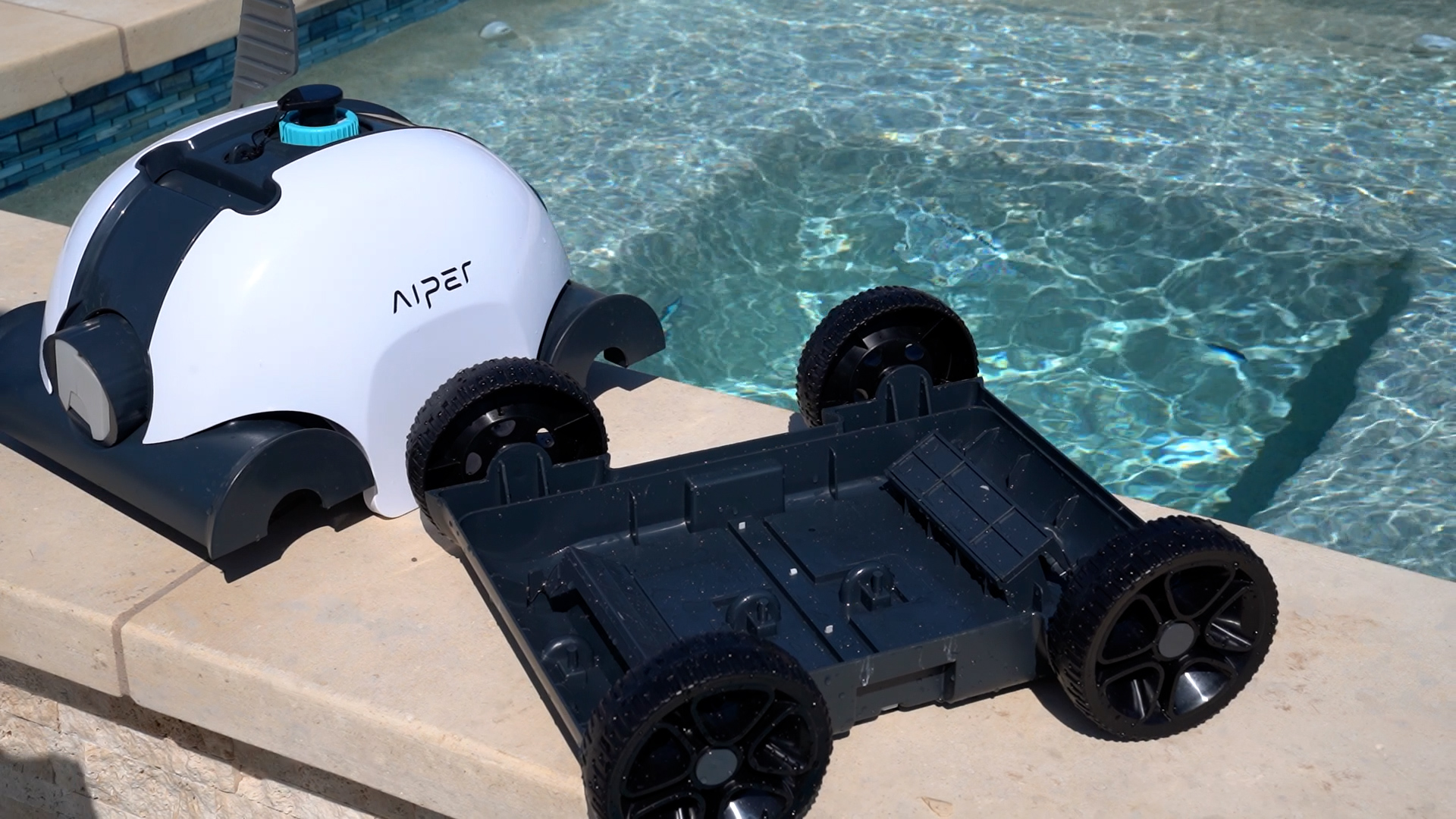
In summary, while both robots have their unique strengths and weaknesses, the Dolphin Proteus DX3 is superior in terms of pool coverage. If you want a pool cleaner that reaches more areas of your pool and does so effectively, the Dolphin Proteus DX3 is a more reliable option compared to the Aiper Seagull 1000.
The filtration systems of robotic pool cleaners are crucial for their performance. Examining both the Aiper Seagull 1000 and the Dolphin Proteus DX3 offers an insightful comparison into their capabilities.
The Aiper Seagull 1000 is equipped with a flat, fine filter. This single-pane mesh filter is designed to capture debris but lacks the efficiency needed for thorough cleaning. During our tests, we found that it struggled to maintain effective filtration, often allowing smaller particles to escape back into the pool.
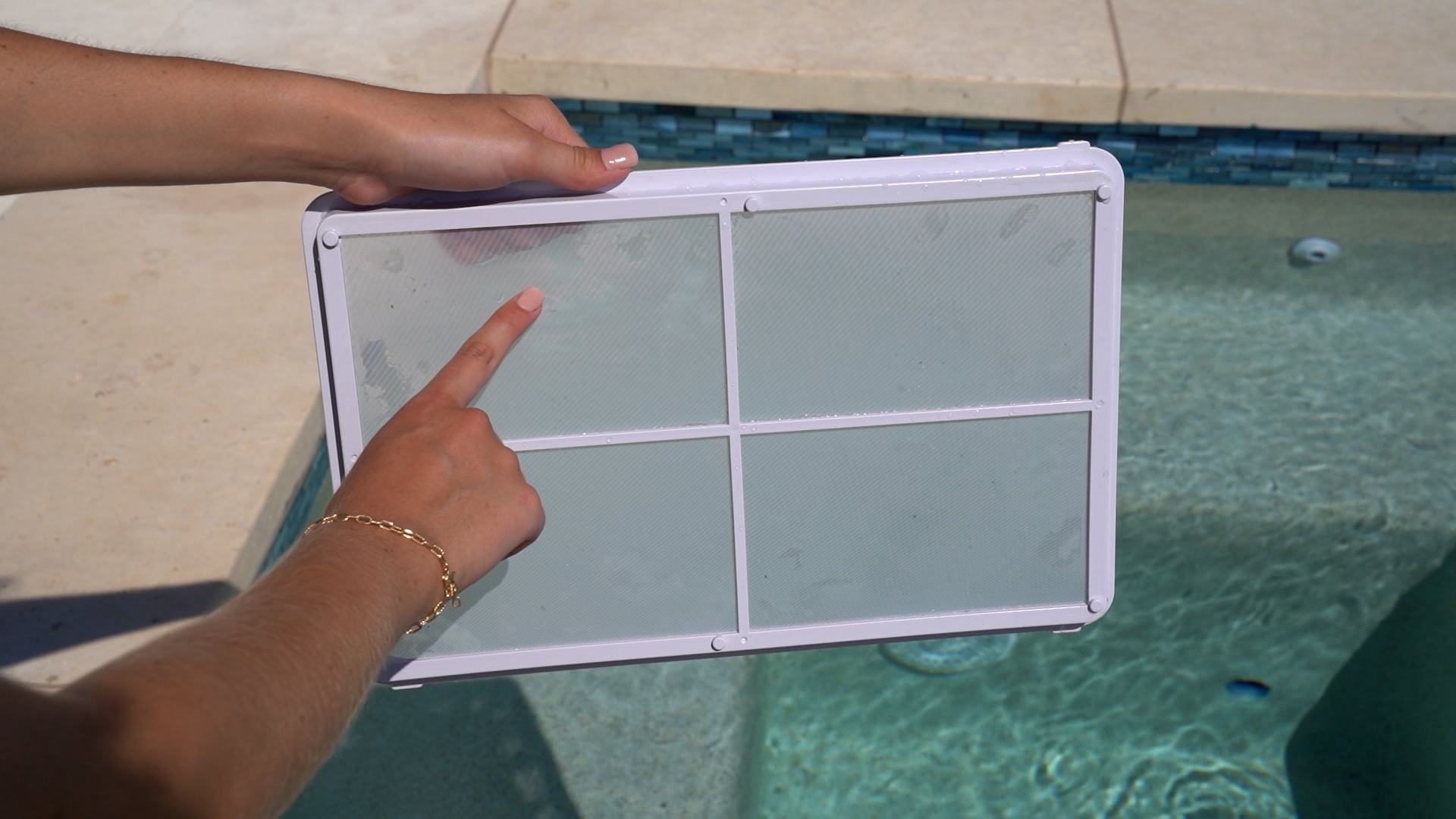
On the other hand, the Dolphin Proteus DX3 utilizes a standard fine filter basket. This basket does a decent job of collecting everyday debris, such as leaves and twigs, but like the Seagull 1000, it lacks the advanced filtration capabilities needed to capture finer particles effectively.
When comparing what debris each can capture, both robots are competent in handling larger items like leaves and small twigs. However, for finer particles such as dirt, sand, and algae, neither system excels. This lack of fine filtration is a significant shortcoming in both models, especially when compared to premium options with NanoFilters.
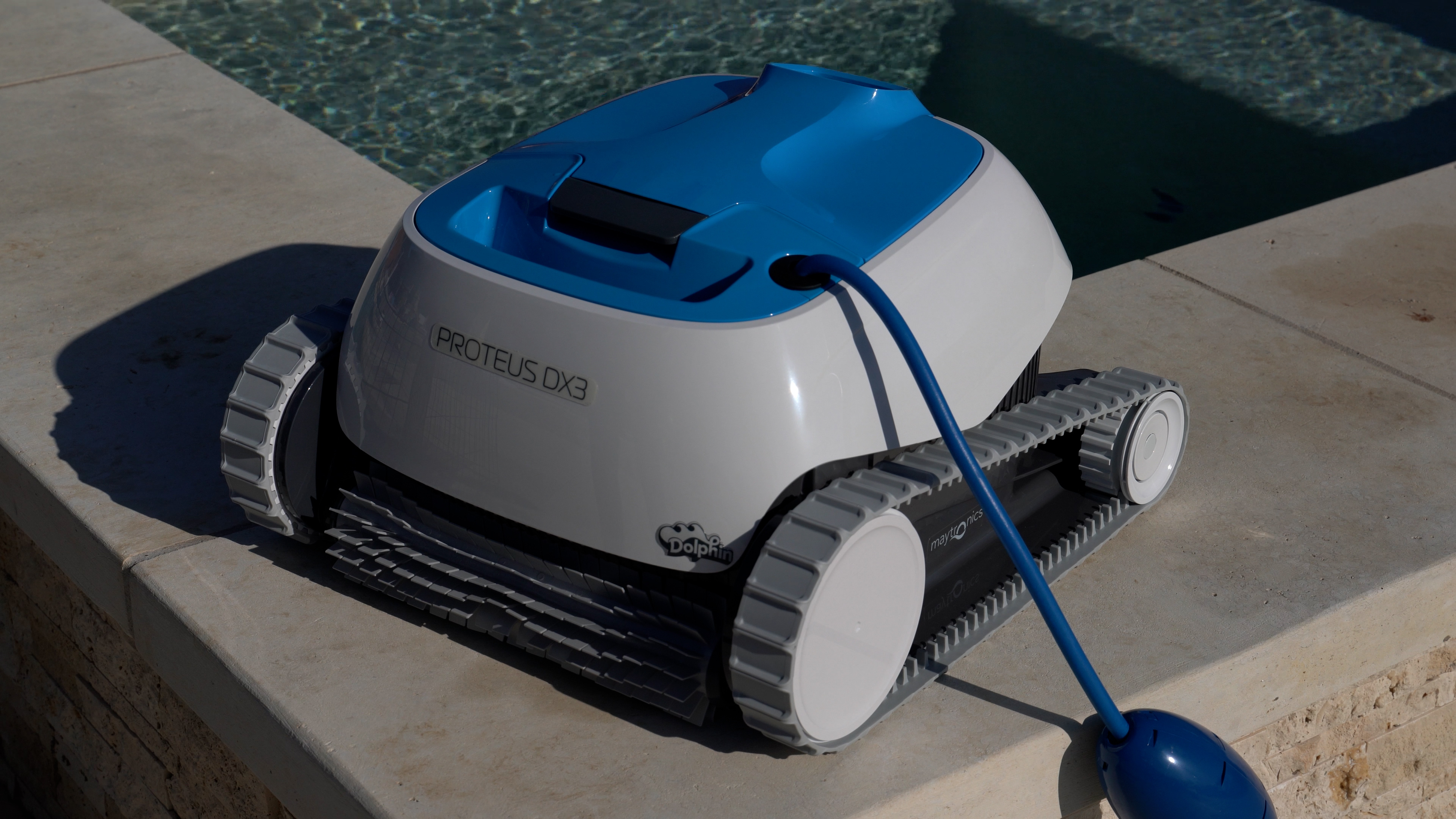
In terms of ease of use, the Dolphin Proteus DX3’s filter system is slightly more accessible and easier to clean compared to the more cumbersome setup of the Aiper Seagull 1000. The Seagull 1000’s filter requires disassembling the unit, which can be a nuisance for regular maintenance.
On a scale of 1-5, the Aiper Seagull 1000 received a filter score of 2 due to its ineffectiveness in capturing fine debris and the overall difficulty in cleaning the filter. The Dolphin Proteus DX3 fared slightly better with a score of 3, reflecting its somewhat improved performance but still lacking the advanced filtration needed for optimal cleaning.
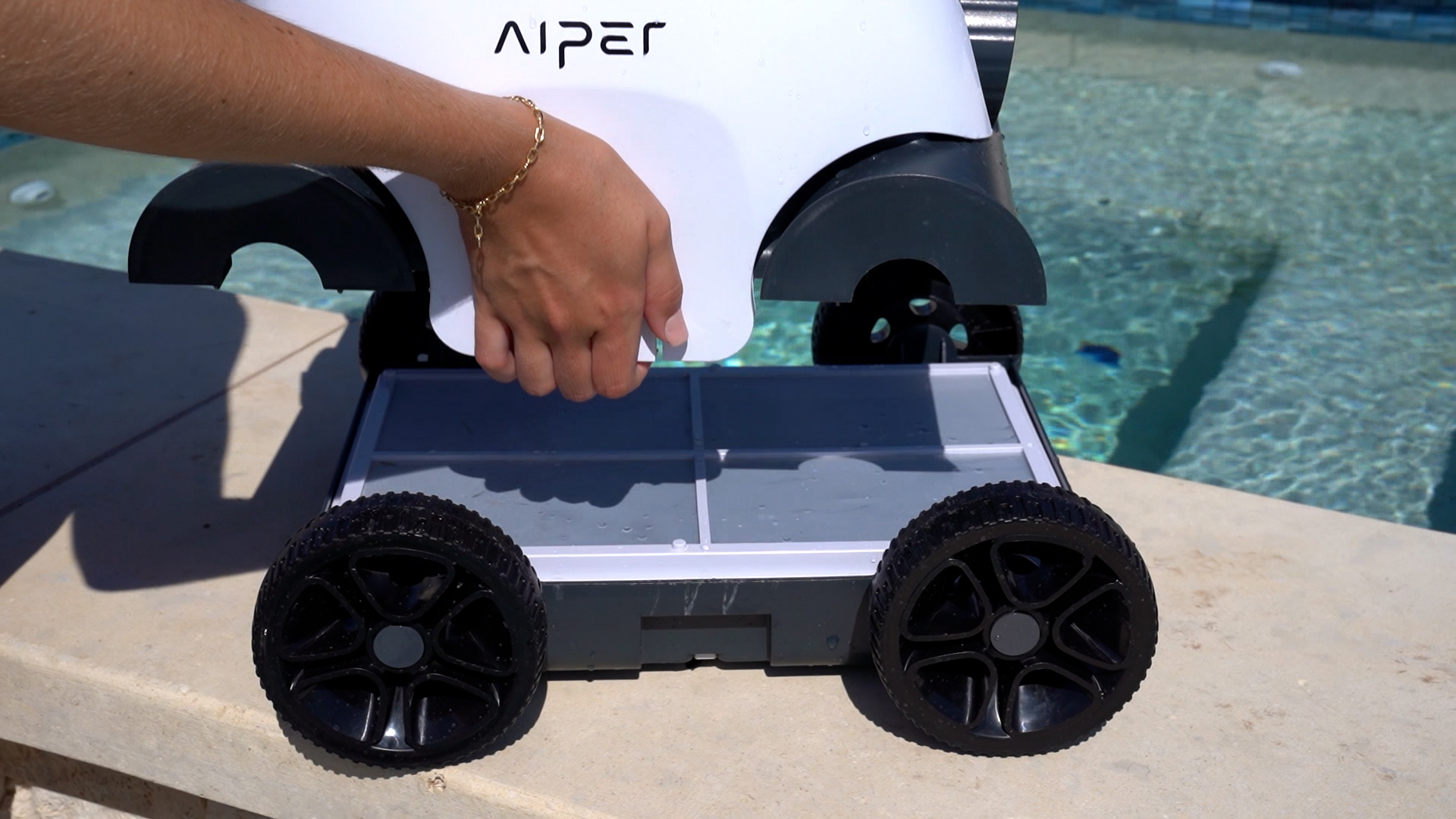
Given these evaluations, the Dolphin Proteus DX3 emerges as the clear winner in the filtration category, albeit with room for improvement. Its filter system is more user-friendly and slightly more effective than the Aiper Seagull 1000.
In conclusion, while neither the Aiper Seagull 1000 nor the Dolphin Proteus DX3 offer top-tier filtration, the DX3 stands out as the better option for those seeking a more reliable cleaning experience. For advanced filtration needs, pool owners might want to consider models like the Dolphin Quantum or the Dolphin Premier, which provide superior filtration options.

The feature sets of the Aiper Seagull 1000 and the Dolphin Proteus DX3 are quite different, reflecting their respective approaches to pool cleaning. Starting with the Aiper Seagull 1000, its standout feature is its cordless design. While this seems innovative, it comes with significant drawbacks in real-world use. The battery life is short, requiring frequent recharges, and the motor is underpowered, limiting its cleaning effectiveness. Furthermore, the lack of an active scrubbing brush diminishes its ability to tackle stuck-on debris effectively.
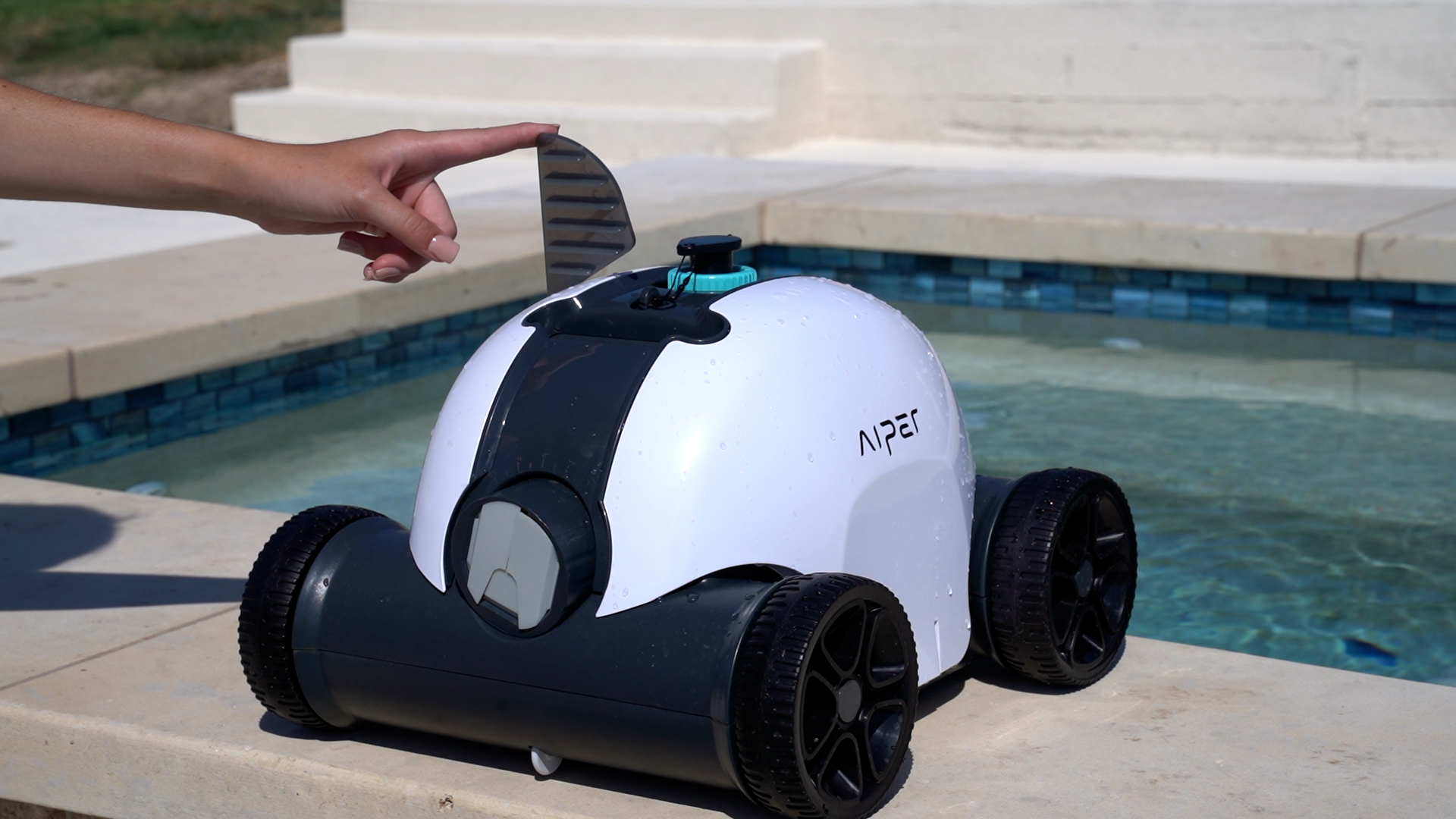
On the other hand, the Dolphin Proteus DX3 features a programmable timer, which allows users to schedule daily, every other day, or every three-day cleaning cycles. This is a critical feature for those looking to automate their pool maintenance and avoid the hassle of manually starting their robot each time. However, the DX3 falls short by not including any advanced filtration options, such as NanoFilters, making it less effective at capturing fine particles compared to higher-end models.
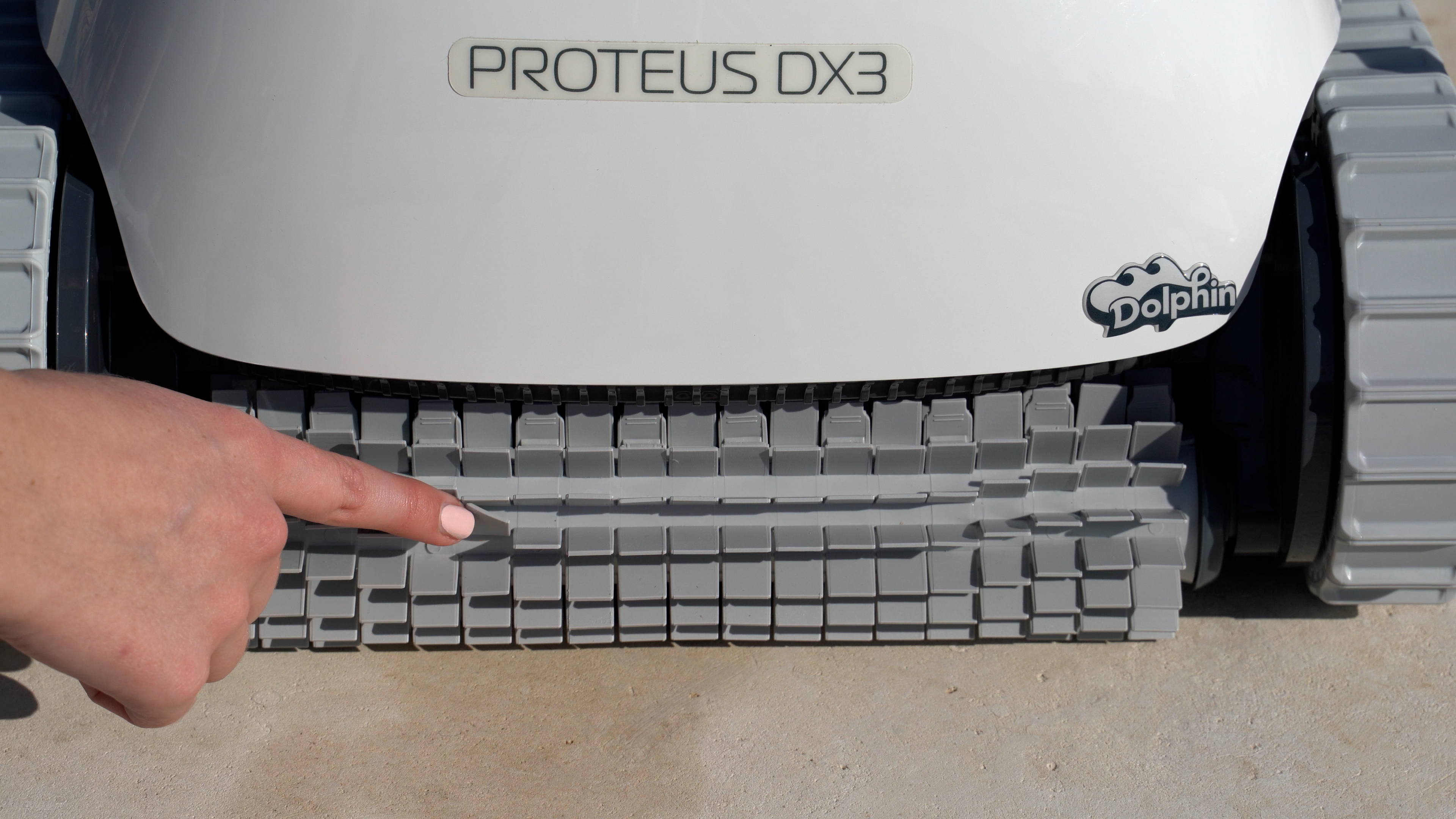
In terms of usability, the Seagull 1000’s cordless nature might seem convenient, but its short battery life and weak motors make it less user-friendly in practice. Additionally, the need to disassemble the unit to clean its filter adds to the inconvenience. Conversely, the Dolphin Proteus DX3 design is more user-friendly. Although it has a less intuitive handle, its cleaning basket is easier to access and clean, and the programmable timer significantly enhances its usability.
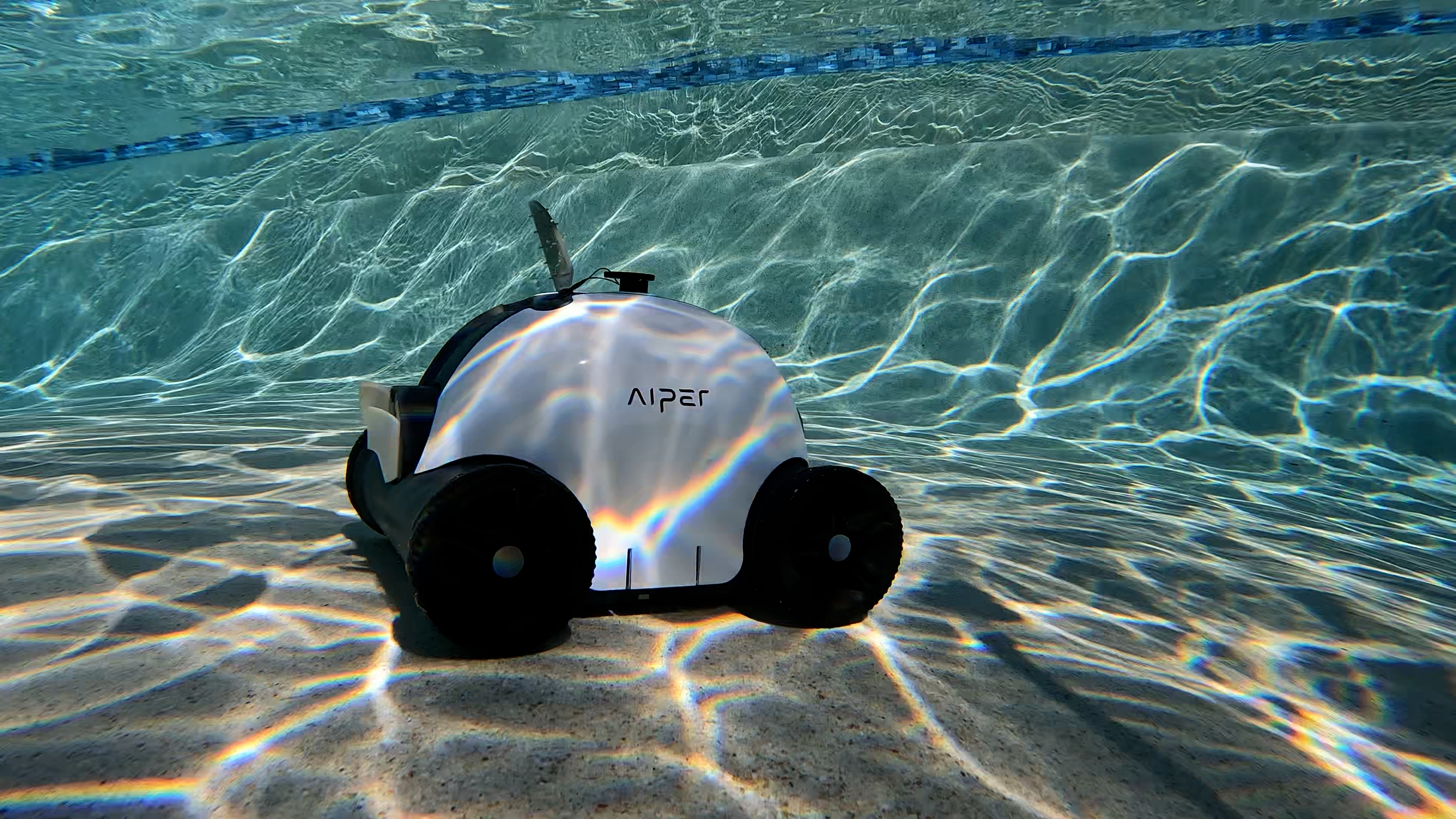
Unique functionalities make a considerable difference in user satisfaction. The sole unique feature of the Aiper Seagull 1000 is its cordless design, which unfortunately fails to meet performance expectations. In contrast, the Dolphin Proteus DX3’s unique feature is its inclusion of a programmable timer. This feature stands out as a major benefit, making the robot far easier to integrate into a regular pool maintenance routine. However, the hidden restocking fees are a significant downside, as they can severely impact the overall cost-effectiveness of the Proteus DX3.
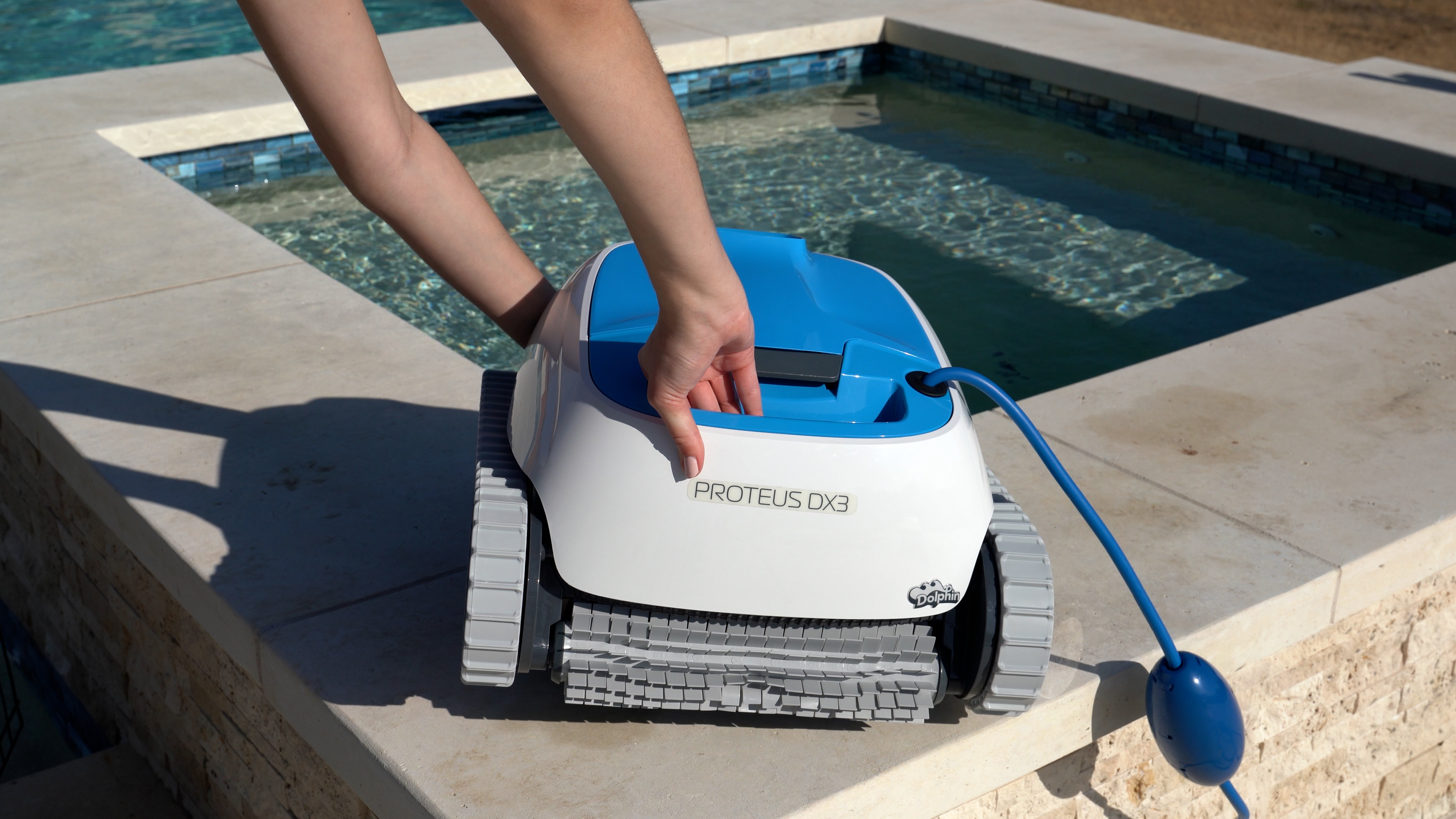
The Dolphin Proteus DX3 received a feature score of 4, matching the feature score of the Aiper Seagull 1000. While the Aiper reaches this score with a basic cordless convenience, the Proteus DX3 hits it through its programmable timer and better overall usability. Despite the similarities in their feature scores, the practical value and user experience offered by these features differ significantly, with the DX3 providing more substantial benefits.
In conclusion, while both the Aiper Seagull 1000 and the Dolphin Proteus DX3 have their unique selling points, the Dolphin Proteus DX3 emerges as the more feature-rich and user-friendly option. Its programmable timer and ease of use outweigh the limitations posed by its simple filtration system and handling issues.
In conclusion, the Aiper Seagull 1000 scores a mere 4/10 due to its limited cleaning capabilities, inadequate filtration, and short battery life. This model primarily focuses on floor cleaning, neglecting the essential aspects of wall and waterline scrubbing. Its lack of power means it struggles to provide a satisfactory clean, making it difficult to justify even at its budget-friendly price.

On the other hand, the Dolphin Proteus DX3 fares better with an overall score of 6/10. It offers good floor and wall coverage, decent cleaning power, and a programmable timer. However, its lack of NanoFilters and the hidden restocking fee are significant drawbacks that prevent it from ranking higher. Nevertheless, it does provide a more reliable and effective cleaning experience compared to the Seagull 1000.
If you are looking for more comprehensive and reliable alternatives, consider the Dolphin Quantum, Dolphin Premier, or Dolphin Cayman. These models offer superior features such as advanced filtration, waterline cleaning, and better warranty terms, ensuring you get the most out of your investment.
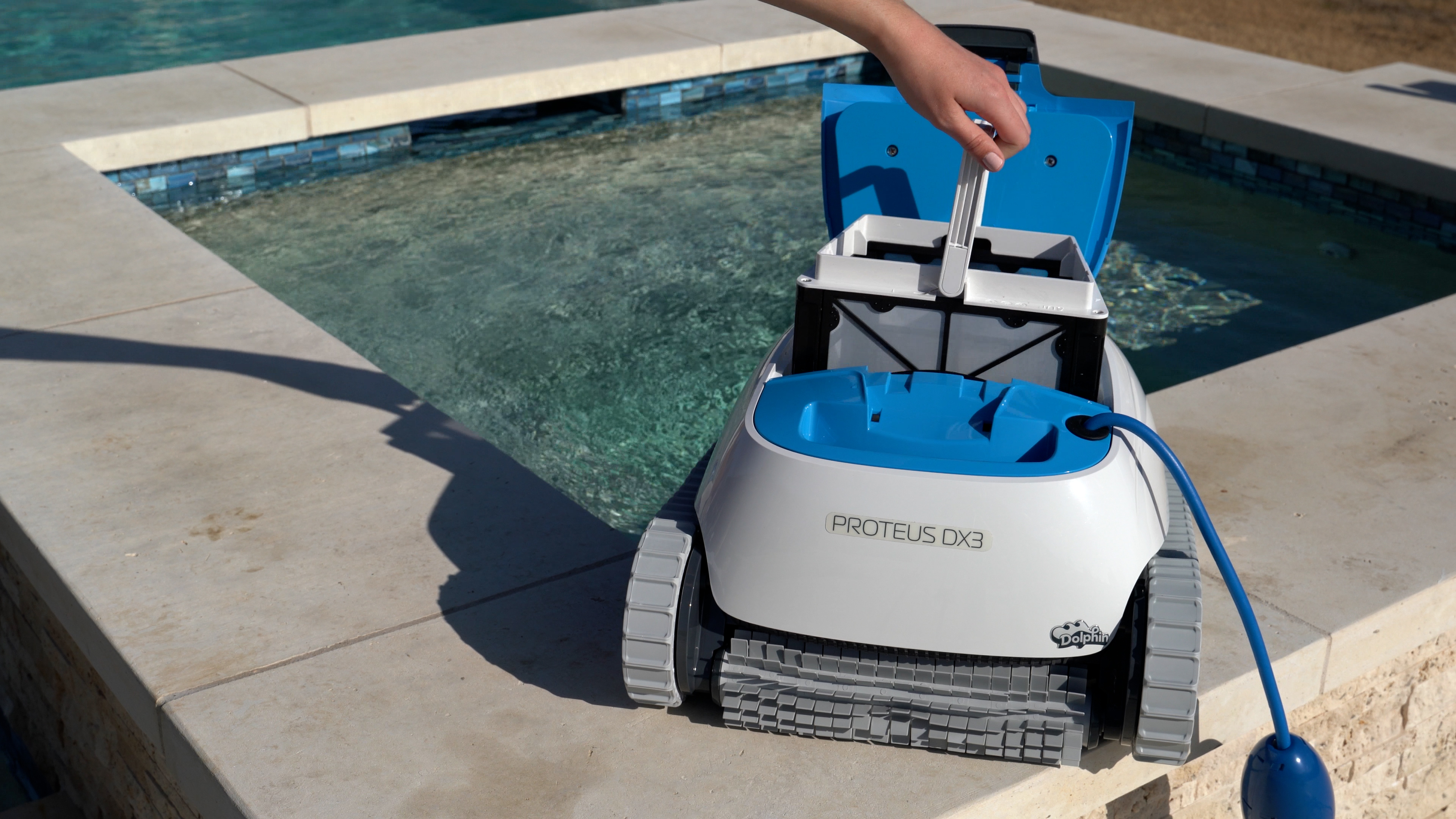
In the head-to-head comparison, the Dolphin Proteus DX3 wins due to its enhanced coverage and better cleaning features. While both models have their flaws, the Proteus DX3 offers a more balanced and effective cleaning solution. Be sure to explore all our reviews for the most thorough recommendations, ensuring your pool cleaning needs are met.
For more detailed insights and comparisons on the best robotic pool cleaners of the year, visit our best pool robots page. We remain dedicated to providing the most accurate and useful information to help you maintain a pristine pool with minimal effort.
If you're seeking an alternative to both the Aiper Seagull 1000 and the Dolphin Proteus DX3, another highly recommended option is the Dolphin Escape. This model is particularly suitable for above-ground and smaller in-ground pools. The Dolphin Escape impresses with its solid pool coverage and powerful cleaning ability, featuring a HyperBrush and SmartNav 2.0 navigation system.
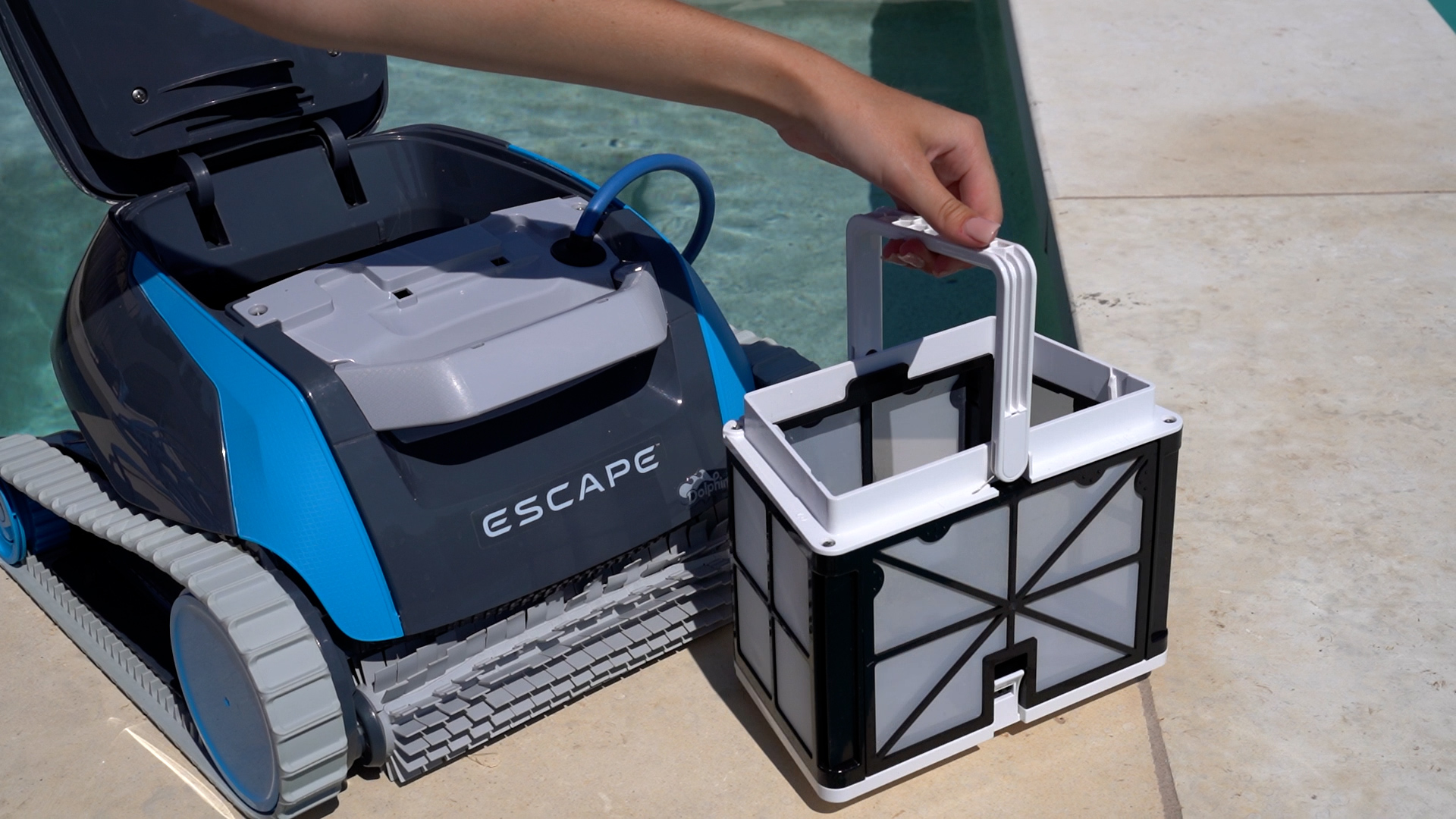
The Dolphin Escape excels in filtration, coming with a standard large filter basket that can be optionally upgraded to NanoFilters. These filters offer superior performance in clearing out both large debris and fine particles. This versatility makes the Dolphin Escape a high-functioning, reliable choice for those who require efficient pool cleaning without breaking the bank.
Another notable competitor is the Aquabot REVA. Designed with advanced features like a gyroscope and smartphone app connectivity, this robot offers excellent pool coverage and user-friendly operation. The REVA also includes waterline cleaning, a feature that sets it apart from many entry-level robotic pool cleaners.

In terms of filtration, the Aquabot REVA employs a unique dual-layer filter system. While it may not include NanoFilters, this system mimics the performance of more advanced filters, making it capable of handling both standard debris and finer particles. Its price point and feature set make it an excellent alternative for those looking for robust cleaning solutions.
For those seeking a reliable cleaner that combines advanced features with a strong cleaning ability, the Dolphin Escape and the Aquabot REVA are exceptional choices. They offer enhanced pool coverage, efficient filtration, and intuitive features, making them suitable for a wide range of pool cleaning needs.
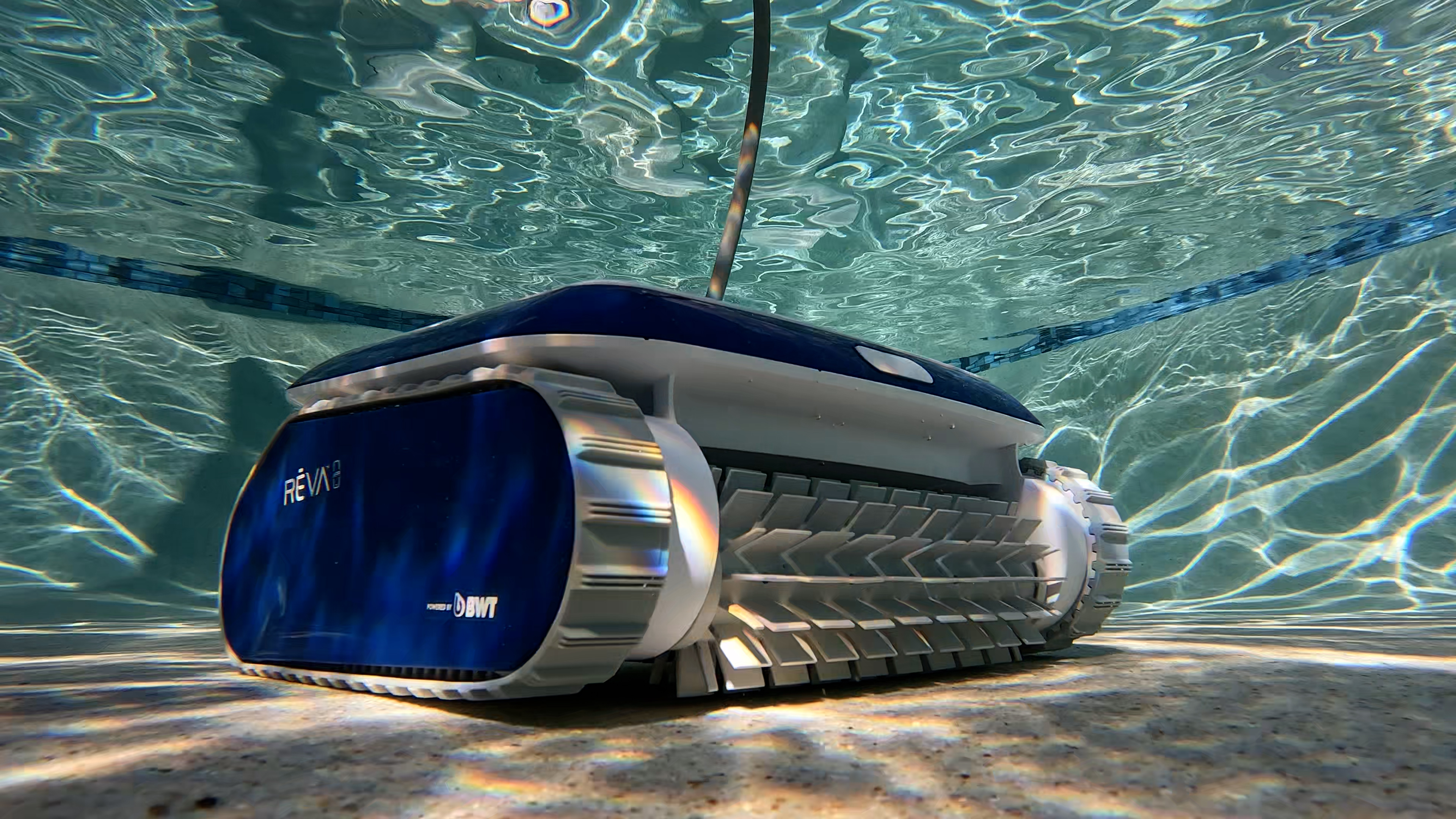
In summary, while the Aiper Seagull 1000 and Dolphin Proteus DX3 each have their strengths, there are other options like the Dolphin Escape and Aquabot REVA that deliver superior performance in many critical areas. Be sure to explore all our reviews for a comprehensive look at the best robotic pool cleaners available.